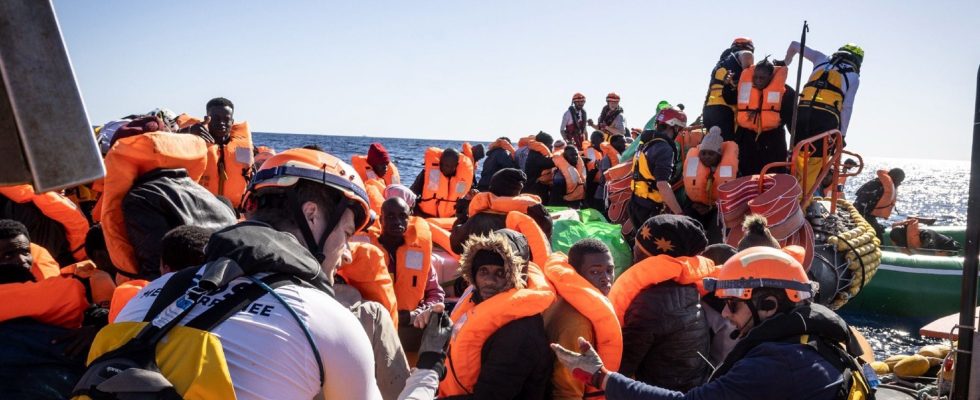The European Parliament voted on Wednesday April 10 in favor of the 10 texts forming the “Pact on Migration and Asylum”. The plenary session in Brussels was briefly interrupted by protests from activists hostile to this reform. Presented by the European Commission in September 2020, this pact is a new attempt to overhaul European rules, after the failure of a previous proposal in 2016 in the wake of the refugee crisis. It must apply in 2026 and its implementation methods will still have to be defined.
The reform notably provides for the establishment of compulsory “screening” prior to the entry of a migrant into the EU. These identification and security checks can last up to seven days. At the end of this maximum period, the person is directed towards an asylum procedure – classic or accelerated – or returned to their country of origin or transit.
Asylum seekers who are statistically least likely to obtain international protection – nationals of countries for which the rate of recognition of refugee status, on average in the EU, is less than 20% such as Morocco, Tunisia and Bangladesh – will be directed towards a “border procedure”. As part of this procedure, it is planned to create some 30,000 places in dedicated centers, in order to ultimately accommodate up to 120,000 migrants per year.
The new system, which replaces the Dublin III Regulation, maintains the general principle in force according to which the first country of entry into the EU of an asylum seeker is responsible for examining their file. However, other criteria have been added to those already in place, allowing the application to be processed in a country other than the one through which it arrived in the EU. While the first country of entry rule places a greater burden on those in southern Europe, a mandatory solidarity mechanism is introduced to relieve member states facing migratory pressure. The other members of the EU must then contribute by welcoming asylum seekers (“relocations”) or by providing financial assistance.
“An essential historic step”
One of the provisions of the reform provides for a response in the event of a massive and exceptional influx of migrants into an EU state, such as during the refugee crisis of 2015-2016. A solidarity mechanism will then be quickly triggered in favor of the State concerned and an exceptional regime will be put in place, less protective for asylum seekers than in the usual procedures.
German Chancellor Olaf Scholz welcomed the adoption of the pact, saying it was an “indispensable historic step”. This reform “allows solidarity between European states. It limits irregular migration and finally relieves the countries which are particularly affected”, said the German leader, in a message on X. The President of the European Parliament, Roberta Metsola, welcomed “a balance between solidarity and responsibility”.
The three main European political families – EPP (right), Socialists and Democrats (S&D) and Renew Europe – have generally supported this pact, which has aroused opposition from a large part of the far right, but also the Greens, the radical left and some socialists. Some 161 human rights organizations, including Human Rights Watch, Amnesty International, the International Rescue Committee, and Oxfam, had called on MEPs to reject the Pact, worrying about “detentions of families with children” and a ” criminalization” of exiles.
The EU is facing a rise in asylum applications, which reached 1.14 million in 2023, their highest level since 2016, according to the European Asylum Agency. “Irregular” entries into the EU are also increasing, to 380,000 in 2023, according to Frontex.
